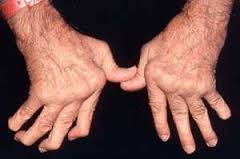Bee venom therapy is also called as APITHERAPY. Man has known the medicinal use of honeybee products since ancient times. Honeybee products have been found useful in treating arthritis, degenerative diseases and many inflammatory conditions.
The Chemical Ingredients in Bee venom:
Honeybee venom contains at least 18 active substances. Melittin is the most potent ant-inflammatory agents known. It is 100 times more potent than Hydrocortisol. Adolapin is another strong anti-inflammatory substance, which inhibits Cyclooxygenase activity and thus exhibits an analgesic effect. Other substances include, hyaluronidase, Compound X, Phospholipase, A2, Histamine and Mast Cell Degranulating Protein, Neurotransmitter like Dopamine, Nor adrenaline and Serotinin.
Medicinal uses of Bee venom:
It is useful in a number of conditions such as,
- Arthritis, Rheumatoid arthritis and Osteoarthritis, Scleroderma.
- Acute and chronic injuries, bursitis, tendonitis and chronic neck pains
- It is useful in dissolving scar tissues and keloids.
- It is useful in Multiple Sclerosis, where its mechanism of action is poorly understood.
How is Bee venom therapy performed?
Bee venom therapy can be performed by a beekeeper and the patient can be taught to use the bees. The bee is taken out of a hive and the number of sites, where the patient is to be stung is determined beforehand and it depends on the condition that the patient is suffering from. A simple tendonitis may respond with a few stings. A chronic arthritis may require 2 to 3 stings for about 3 months, before a favorable result is obtained. Patient with Multiple Sclerosis take many months before they respond.
The Side effects of the treatment are
- Inflammation
- Itching
- Rarely a severe life threatening choking may result because of an anaphylactic reaction.
Conclusion:
Many physicians are using Bee venom therapy. They do this by obtaining the venom in sterilized vials and inject it under the skin, sometimes after mixing it with a local anesthetic agent to prevent the pain that accompanies the sting. It is better to administer this in a clinical setting, where the doctor has measures to counter the severe allergic reactions that sometimes occur.



